-
 Bitcoin
Bitcoin $119100
-2.16% -
 Ethereum
Ethereum $4300
-0.31% -
 XRP
XRP $3.171
-2.99% -
 Tether USDt
Tether USDt $1.000
-0.01% -
 BNB
BNB $814.1
-1.33% -
 Solana
Solana $176.5
-4.67% -
 USDC
USDC $0.0000
0.00% -
 Dogecoin
Dogecoin $0.2267
-5.83% -
 TRON
TRON $0.3465
2.15% -
 Cardano
Cardano $0.7870
-4.98% -
 Chainlink
Chainlink $21.66
-2.27% -
 Hyperliquid
Hyperliquid $43.89
-4.62% -
 Stellar
Stellar $0.4414
-3.35% -
 Sui
Sui $3.707
-6.73% -
 Bitcoin Cash
Bitcoin Cash $599.1
3.73% -
 Hedera
Hedera $0.2504
-6.96% -
 Ethena USDe
Ethena USDe $1.001
-0.01% -
 Avalanche
Avalanche $23.21
-4.99% -
 Litecoin
Litecoin $121.1
-3.55% -
 Toncoin
Toncoin $3.415
0.45% -
 UNUS SED LEO
UNUS SED LEO $9.002
-1.24% -
 Shiba Inu
Shiba Inu $0.00001314
-5.43% -
 Uniswap
Uniswap $11.45
1.63% -
 Polkadot
Polkadot $3.926
-5.37% -
 Cronos
Cronos $0.1694
1.63% -
 Ethena
Ethena $0.8117
-2.35% -
 Dai
Dai $1.000
0.00% -
 Bitget Token
Bitget Token $4.422
-1.43% -
 Monero
Monero $264.2
-0.83% -
 Pepe
Pepe $0.00001137
-8.29%
Analysis of the similarities and differences between USDT and USD
While both USD and USDT serve as mediums of exchange, USD's central bank backing contrasts sharply with USDT's privately held, less transparent reserves, impacting their respective stability and regulatory oversight.
Mar 12, 2025 at 01:56 am
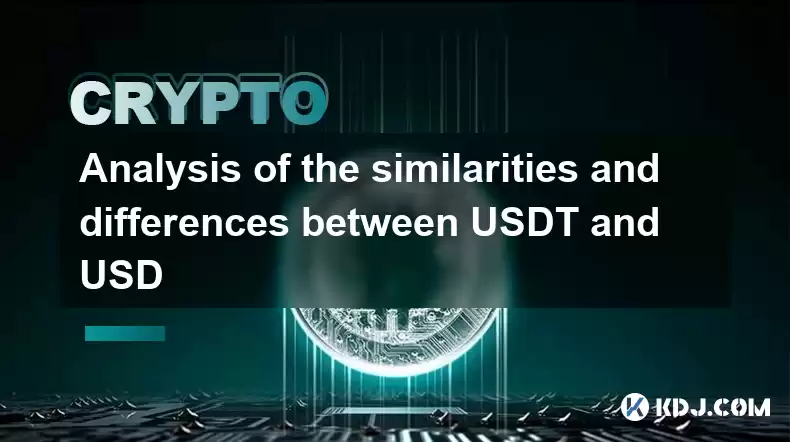
Key Points:
- Issuance and Backing: Both USDT and USD are forms of currency, but their issuance and backing differ significantly. USD is issued by a central bank (the Federal Reserve), while USDT is issued by a private company (Tether) and claims to be backed by reserves. The nature of these reserves is a key point of contention.
- Regulation and Oversight: USD is subject to strict regulations and oversight by governmental bodies. USDT, as a cryptocurrency, faces less stringent regulation, although this is changing globally.
- Accessibility and Transaction Speeds: USD transactions are generally processed through traditional banking systems, which can be slower and more expensive. USDT transactions, leveraging blockchain technology, are often faster and cheaper, though subject to network congestion.
- Volatility and Stability: USD is generally considered a stable currency, though its value fluctuates against other currencies. USDT aims for a 1:1 peg with the USD, but its stability has been questioned due to concerns about its backing.
- Use Cases: USD is used for a wide range of transactions, from everyday purchases to large-scale financial operations. USDT is primarily used in the cryptocurrency market for trading, transferring value, and accessing certain DeFi services.
Analysis of the Similarities and Differences Between USDT and USD
Both USD and USDT represent units of value, but their fundamental characteristics and functionalities diverge significantly. Understanding these differences is crucial for anyone navigating the cryptocurrency landscape.
Similarities:
- Unit of Account: Both USD and USDT serve as units of account, meaning they can be used to measure the value of goods and services. A price can be expressed in either USD or USDT, though the value equivalence is not always guaranteed.
- Medium of Exchange: Both can be used as a medium of exchange, facilitating transactions. However, the acceptance of USDT is far more limited than USD, primarily confined to the cryptocurrency ecosystem.
- Store of Value: Both theoretically act as a store of value, preserving purchasing power over time. However, the volatility of USDT compared to the relative stability of USD renders this similarity less reliable for USDT.
Differences:
- Issuance and Backing: The most significant difference lies in how they are issued and backed. The USD is issued by the Federal Reserve, a central bank, and its value is underpinned by the US government and economy. USDT, in contrast, is issued by Tether, a private company. Tether claims its USDT is backed by reserves, but the exact composition and verification of these reserves remain a point of ongoing debate and scrutiny within the crypto community.
- Regulation: USD is subject to rigorous governmental regulations and oversight. Its issuance, circulation, and transactions are governed by a complex framework of laws and regulations. USDT, as a cryptocurrency, faces a less regulated environment, although this is changing rapidly with increasing global regulatory pressure on stablecoins. The lack of comprehensive regulation introduces significant risks.
- Transaction Speed and Cost: Transactions using USD are typically processed through traditional banking systems, which can be slow and relatively expensive, especially for international transfers. USDT transactions, utilizing blockchain technology, are generally faster and cheaper. However, network congestion can impact transaction speeds and costs on certain blockchains.
- Volatility: USD, while subject to fluctuations against other currencies, generally exhibits relative stability compared to most cryptocurrencies. USDT, aiming for a 1:1 peg with the USD, has experienced periods of instability and deviations from its intended peg, raising concerns about its reliability as a stable store of value. These deviations often trigger significant market reactions.
- Accessibility: USD is widely accessible globally through established banking systems and financial institutions. Accessing USDT typically involves using cryptocurrency exchanges, which may have geographic restrictions and require users to navigate complex procedures involving digital wallets and cryptographic keys.
Step-by-Step Guide to Obtaining USDT (Illustrative):
- Choose a Cryptocurrency Exchange: Select a reputable exchange that supports USDT trading.
- Create an Account: Register and verify your identity on the chosen exchange.
- Fund Your Account: Deposit funds into your exchange account using a supported method (e.g., bank transfer, credit/debit card).
- Purchase USDT: Once your funds are available, place an order to buy USDT using your deposited funds.
- Transfer USDT (Optional): Transfer your purchased USDT to a personal cryptocurrency wallet for increased security.
Frequently Asked Questions:
Q: Is USDT a safer investment than USD?
A: No, USDT is generally considered riskier than USD. The stability of USD is backed by a government and a robust economy, while USDT's stability is dependent on the claims and actions of a private company, and its reserves are not always transparently audited.
Q: Can I use USDT for everyday purchases?
A: No, widespread acceptance of USDT for everyday purchases is extremely limited. USD is the dominant currency for most transactions. USDT's usage is primarily within the cryptocurrency ecosystem.
Q: What are the risks associated with investing in USDT?
A: The primary risks include the potential for de-pegging from the USD, regulatory uncertainty, and the operational risks associated with Tether as a private company. Auditing issues and concerns about the composition of Tether's reserves further amplify these risks.
Q: How is USDT regulated?
A: USDT's regulatory landscape is evolving. Currently, regulation varies across jurisdictions, and the level of oversight is significantly less stringent than that applied to traditional fiat currencies like the USD. However, increasing global regulatory scrutiny is leading to changes in the regulatory environment for stablecoins.
Q: What is the difference between the backing of USD and USDT?
A: USD is backed by the full faith and credit of the US government and the US economy. USDT claims to be backed by reserves, but the exact nature and verification of these reserves remain a key source of debate and scrutiny. This lack of complete transparency poses a significant risk to USDT's stability.
Disclaimer:info@kdj.com
The information provided is not trading advice. kdj.com does not assume any responsibility for any investments made based on the information provided in this article. Cryptocurrencies are highly volatile and it is highly recommended that you invest with caution after thorough research!
If you believe that the content used on this website infringes your copyright, please contact us immediately (info@kdj.com) and we will delete it promptly.
- Ethereum Layer-2 Scaling Competition Heats Up as ETH Breaks $4K
- 2025-08-12 10:30:12
- Meme Coins, Investment, and Token Burns: What's Hot in 2025?
- 2025-08-12 10:30:12
- BlockDAG, Chainlink, Hedera: The Cryptos Enterprises are Eyeing
- 2025-08-12 09:30:12
- Dogecoin's Wild Ride: Big Holders, Price Push, and What's Next for the Meme Coin
- 2025-08-12 08:30:12
- Coin Master Board Adventure: Free Energy and the Thrill of the Board
- 2025-08-12 08:50:12
- Bitcoin to $133,000? Here's What the Experts Are Saying
- 2025-08-12 08:30:12
Related knowledge
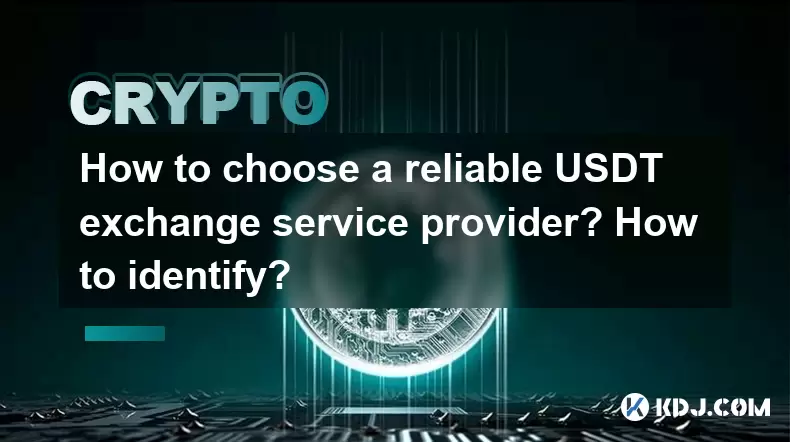
How to choose a reliable USDT exchange service provider? How to identify?
Jun 12,2025 at 03:15pm
Understanding the Role of USDT in Cryptocurrency TradingUSDT (Tether) is one of the most widely used stablecoins in the cryptocurrency market. It is d...
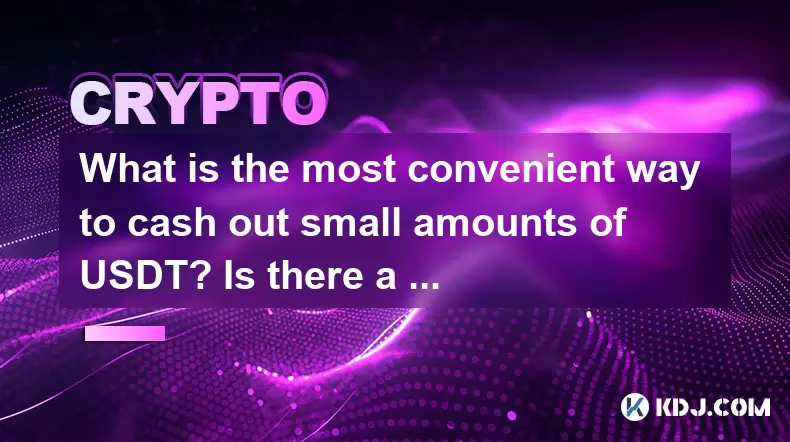
What is the most convenient way to cash out small amounts of USDT? Is there a shortcut?
Jun 11,2025 at 11:00pm
Understanding the Need to Cash Out Small USDT AmountsCashing out small amounts of USDT can be a challenge for many crypto users. Traditional methods o...
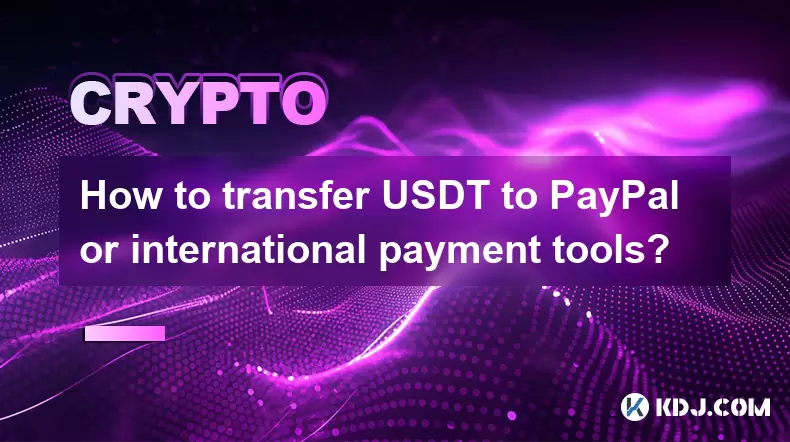
How to transfer USDT to PayPal or international payment tools?
Jun 15,2025 at 05:28am
Understanding the Basics of USDT and PayPal IntegrationUSDT (Tether) is a stablecoin pegged to the US dollar, offering blockchain-based value transfer...
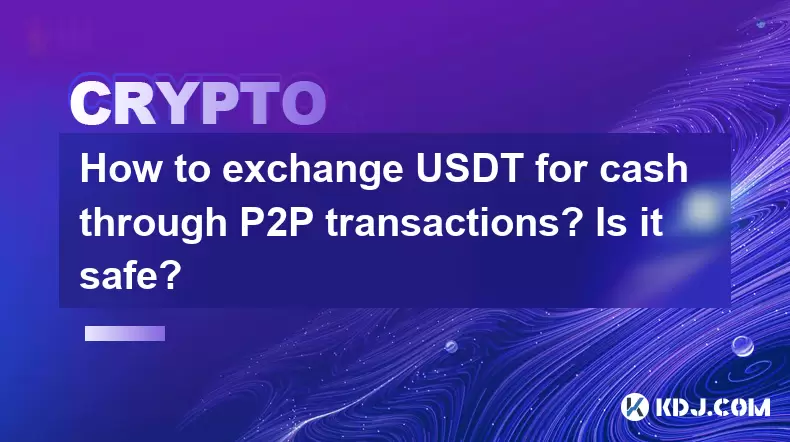
How to exchange USDT for cash through P2P transactions? Is it safe?
Jun 18,2025 at 07:56am
Understanding USDT and P2P TransactionsTether (USDT) is a stablecoin pegged to the value of the US dollar, making it a popular choice for users who wa...
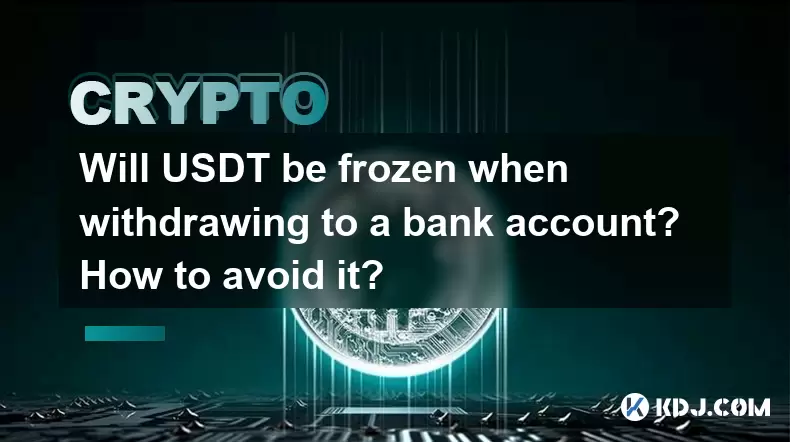
Will USDT be frozen when withdrawing to a bank account? How to avoid it?
Jun 15,2025 at 10:03am
Understanding USDT Withdrawals and Bank Account Freezing RisksWhen users decide to withdraw USDT (Tether) to a bank account, one of the most common co...

How to avoid risks when exchanging USDT for cash? What are the pitfalls?
Jun 11,2025 at 08:14pm
Understanding the Risks of Exchanging USDT for CashWhen exchanging USDT (Tether) for cash, users must be aware of the potential risks involved. As a s...

How to choose a reliable USDT exchange service provider? How to identify?
Jun 12,2025 at 03:15pm
Understanding the Role of USDT in Cryptocurrency TradingUSDT (Tether) is one of the most widely used stablecoins in the cryptocurrency market. It is d...

What is the most convenient way to cash out small amounts of USDT? Is there a shortcut?
Jun 11,2025 at 11:00pm
Understanding the Need to Cash Out Small USDT AmountsCashing out small amounts of USDT can be a challenge for many crypto users. Traditional methods o...

How to transfer USDT to PayPal or international payment tools?
Jun 15,2025 at 05:28am
Understanding the Basics of USDT and PayPal IntegrationUSDT (Tether) is a stablecoin pegged to the US dollar, offering blockchain-based value transfer...

How to exchange USDT for cash through P2P transactions? Is it safe?
Jun 18,2025 at 07:56am
Understanding USDT and P2P TransactionsTether (USDT) is a stablecoin pegged to the value of the US dollar, making it a popular choice for users who wa...

Will USDT be frozen when withdrawing to a bank account? How to avoid it?
Jun 15,2025 at 10:03am
Understanding USDT Withdrawals and Bank Account Freezing RisksWhen users decide to withdraw USDT (Tether) to a bank account, one of the most common co...

How to avoid risks when exchanging USDT for cash? What are the pitfalls?
Jun 11,2025 at 08:14pm
Understanding the Risks of Exchanging USDT for CashWhen exchanging USDT (Tether) for cash, users must be aware of the potential risks involved. As a s...
See all articles

























































































